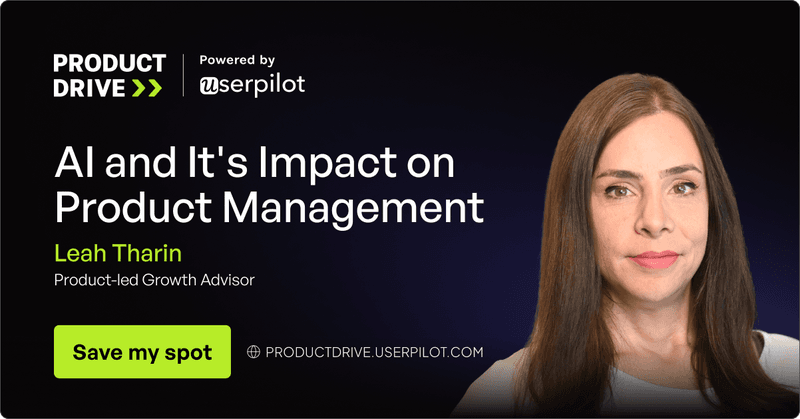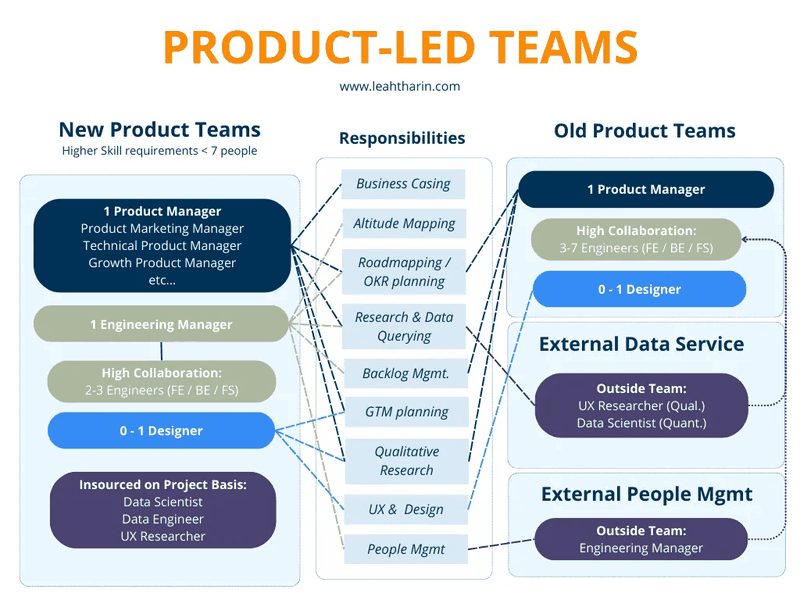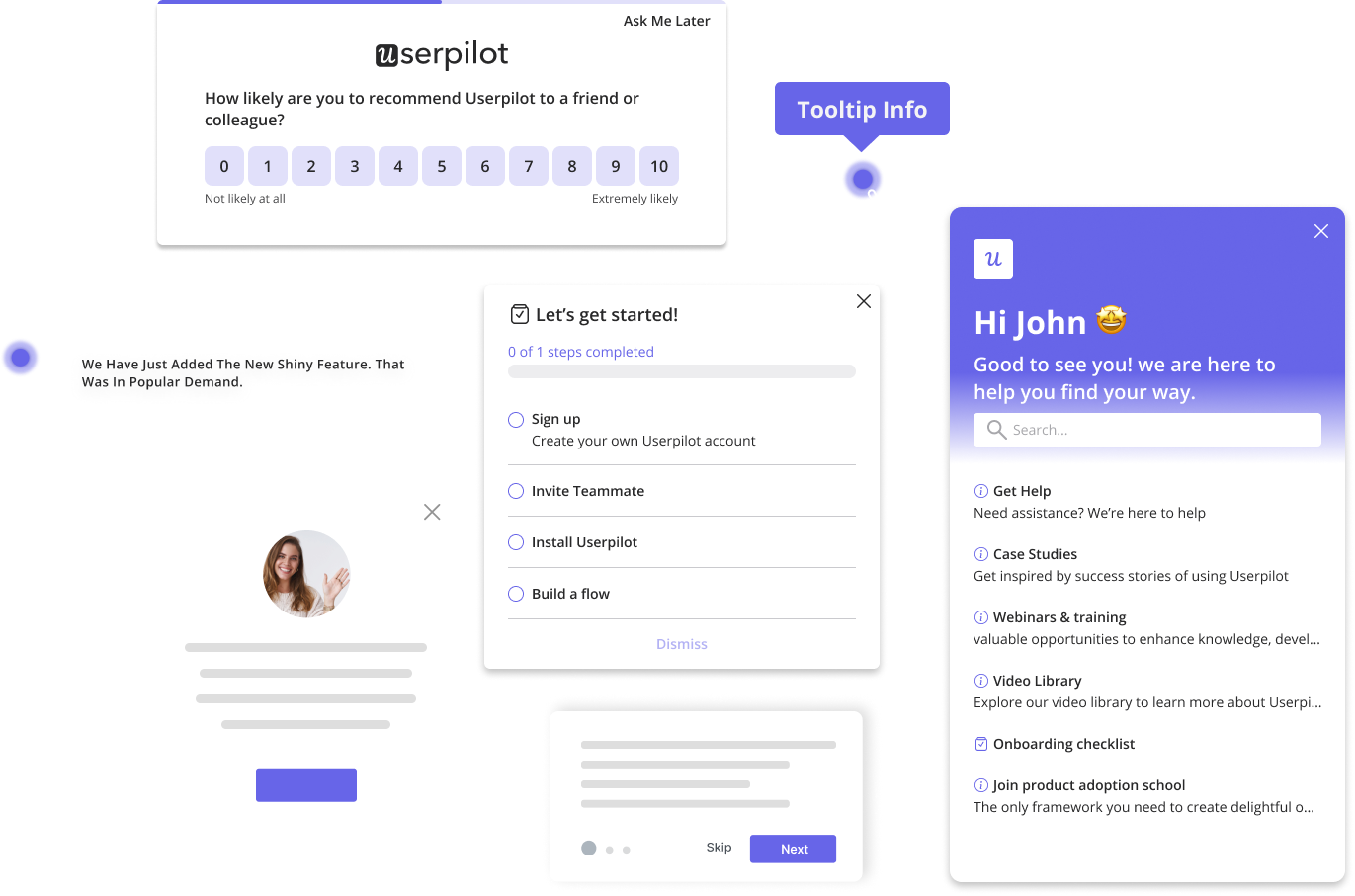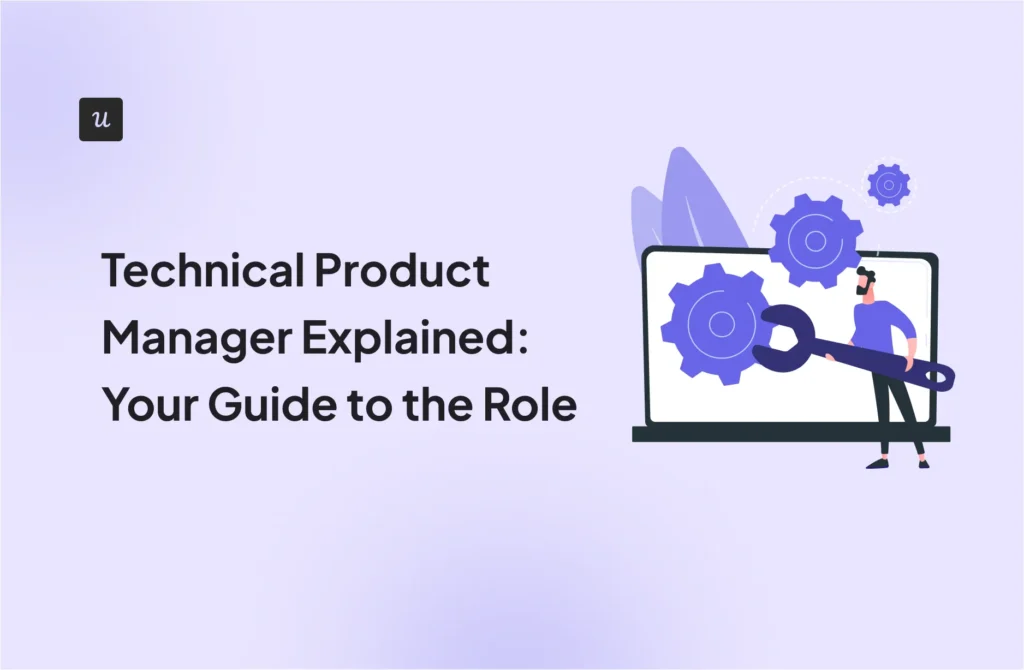
AI’s Real Impact on Product Management: Separating Hype from Reality
With the development of AI for product management, the speed of product work has fundamentally changed. AI has reshaped discovery, prioritization, and strategy processes, becoming a co-pilot both for daily tasks and long-term planning.
But the shift also affects customer expectations and the reality of product managers’ daily work. Good PMs need to learn how to adapt to the new reality by leveraging AI to streamline the basics and focus on the bigger picture.
In this article, I’ll break down the new outlook on product management in the AI era based on the approach of Leah Tharin, a product-led growth specialist. I’ll also give you an overview of how to future-proof your product management skills and career.
You can also register to join Leah during her Product Drive webinar on October 7th, and discover more hands-on examples and actionable implementation strategies.

Try Userpilot Now
See Why 1,000+ Teams Choose Userpilot

What is the importance of AI for product management?
AI is transforming what it means to be a product manager. Tasks that used to consume hours of our time, like analyzing user feedback, creating initial PRDs, or compiling market research, can now be automated or completed in minutes rather than days.
AI is making us PMs faster at our jobs, but it also makes the customers expect a smoother and more personalized experience. And with that, the internal expectations placed on product managers also evolve.
We need to become business translators who can connect technical capabilities with revenue outcomes. We also need to be able to lead development through uncertainty, prioritizing faster and iterating smarter. And understanding how AI impacts our customers’ workflows and buying decisions will help us adopt this approach effectively.
Yes, it’s a challenging time to be a product manager. The bar is higher, and expectations are broader. But I see this as the biggest professional growth opportunity we’ve had in years. The PMs who master AI for product management principles now will be the ones leading cross-functional teams and driving strategic decisions.
Shifting product team structure as a new opportunity for AI product managers: Leah Tharin’s approach
Leah Tharin, a B2B Product & Growth specialist, points out that AI is transforming how people discover and evaluate products.
Buyers now use AI-powered search tools to research solutions, compare features automatically, and even test products before talking to sales. This shift means customers arrive at your product with higher expectations and less patience for poor experiences.
This reality demands a fundamental change in how we structure product teams. Leah proposes a new structure for product-led teams where we expect significantly more from PMs.
Previously, our focus centered on roadmapping, backlog management, and qualitative research. Now we need to develop four additional areas: business casing, altitude mapping, research and data querying, and GTM planning.

1. Business casing and altitude mapping
Creating a business case can feel overwhelming if you’ve never done it before. But an altitude map becomes your secret weapon for connecting product work to company revenue. Think of it as a collaborative exercise with your team to map exactly what you do and how it drives revenue.
I’ll use Leah’s kitchen analogy to explain this: an altitude map shows how you organize your kitchen and what food you produce. It identifies which areas of your “menu” improve the business. This becomes the missing link between executive language and the product team’s understanding.
Growth teams typically focus their altitude maps on free-to-paid conversions or activation metrics like the “Aha! moment.” They connect marketing traffic directly to product features. Core product teams focus more on reactivation and retention metrics, though they’re usually further from direct revenue impact.
A solid altitude map means your team focuses less on what you ship and more on what you impact. Features become tools, not goals. The business case then quantifies exactly how much your “food” moves specific metrics, making your initiatives comparable across all company dimensions.
2. Research and data querying
Here’s the hard truth: the time when you could outsource basic research is over. You need to learn the basics of qualitative and quantitative analysis yourself.
Why? Because the best opportunities often hide where you can’t see them in existing analytics dashboards. It’s like conducting an investigation; you only know the right question once you spot the problem. I recommend that you not have someone else investigate for you, especially when they lack the business context.
For quantitative work, this means learning SQL and using AI language models to adapt existing queries. By implementing this knowledge, your data scientists can finally focus on big investigations across the entire organization instead of addressing basic report requests.
Regarding qualitative research, you need to conduct customer analysis yourself. Reaching out to UX researchers for support is beneficial since many good designers already possess research skills, but you should still conduct your own customer interviews or surveys.

3. GTM planning
You can’t build effectively if you don’t understand how your features get sold. The product team should own the go-to-market strategy when introducing a new product.
This approach doesn’t mean you create the entire marketing campaign yourself, but you need to collaborate closely with product marketing and marketing teams. Otherwise, you create a frustrating “ship first, advertise later” mentality that makes marketing’s job nearly impossible.
We can connect it directly to building solid business cases. How can you predict a feature’s impact without asking marketing about SEO keyword potential or understanding how sales will position the new capability?
4. Outcome-driven roadmap design
Focus your roadmap on customer economic outcomes, not vanity metrics. You need to solve customer problems that drive real commercial value.
For that, you need to learn how to tie features to financial impact and mitigate feature creep by smartly prioritizing requests coming from other teams (for example, sales teams asking for features requested by their accounts). Additionally, most enterprise buyers now test your product before ever talking to sales. Build for this new reality and optimize for powerful first impressions.
Leveraging AI as a co-pilot: Boosting PM workflow efficiency
AI for product management enables smarter, faster workflows that allow us to focus on strategic oversight and innovation, while preserving our critical human intuition and decision-making capabilities.
Here are practical examples of how AI can handle classic PM tasks so you have more time for your new responsibilities:
- Perform market and user research: AI-powered tools can process massive amounts of data (like competitor features or industry reports) to spot opportunities you might miss. It saves you from spending days as you get insights within hours.
- Synthesize feedback into actionable feature ideas: AI can help you improve customer feedback analysis. It can process thousands of tickets, responses, and interviews to identify sentiment patterns and suggest specific feature ideas based on user needs. Use Userpilot to create surveys for collecting feedback, and AI to transform those insights into concrete next steps.
- Streamline product documentation with AI assistance: AI helps us create product requirement documents (PRDs) faster. It generates solid first drafts, refines language for clarity, and helps avoid the feature factory trap by questioning whether each requirement truly serves user outcomes.
- Optimize roadmapping: AI algorithms can analyze your historical feature performance data to predict how specific features will impact metrics like user satisfaction and retention. This takes the guesswork out of creating customer-facing roadmaps.
- Prioritize with ease: With AI, you can evaluate features and tasks based on their potential impact on product success, considering factors like development effort, user demand, and business value. It removes emotional bias from prioritization and ensures you’re always working on what matters most.
- MVP development: Advanced AI tools let you build no-code prototypes quickly. This speeds up iteration cycles and helps you communicate concepts to designers, engineers, and stakeholders. Autocoding and vibecoding tools won’t replace full development, but they streamline testing and demonstrate ideas to your team faster.
How to future-proof your product manager career for AI?
While it’s challenging to be a product manager right now, it’s also an incredible opportunity. I fully agree with Leah’s words:
“[Product managers] are the number one function in the company that has a chance of seeing cross-functional opportunities.”
The PMs who thrive in the AI era will master two critical skills.
- Become cross-functional translators: Good PMs should be able to turn technical constraints into business risks, transform sales feedback into product opportunities, and balance speed with compliance.
- Lead through uncertainty: PMs should learn to iterate better and faster, prioritizing small but quick experiments and always planning for uncertainty, including space for continuous improvement in any growth funnel.
To learn more about how to actually turn this into practice and use AI for product management, register for Leah Tharin’s ProductDrive talk. The conference is free, but seats are limited, so sign up fast. See you there!






